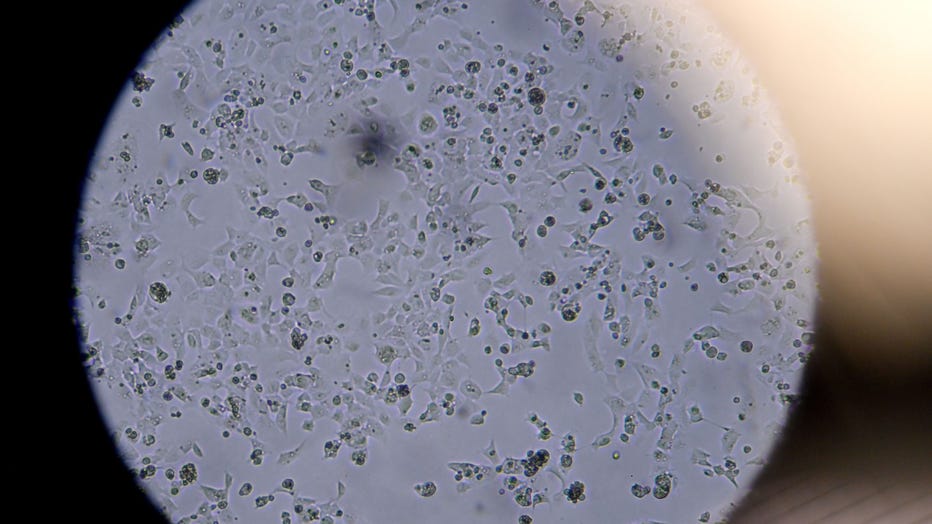Beyond fever and shortness of breath, experts say COVID-19 symptoms can appear in unusual ways
While most people are familiar with the more commonly reported symptoms of COVID-19, such as fever, shortness of breath, cough or muscle aches, health experts are learning about other unusual ways it can manifest itself inside the body.
Research published in recent weeks suggests that SARS-CoV-2, the virus that causes COVID-19, may actually be a master of disguise — presenting itself through symptoms that people may not typically associate with the virus.
RELATED: CoronavirusNOW.com, FOX launches national hub for COVID-19 news and updates
A 71-year-old woman was hospitalized in the U.S. in March after visiting Egypt, which included a four-day cruise down the Nile River. Dr. Anthony DeBenedet from Saint Joseph Mercy Health System in Michigan reported the case in the American Journal of Gastroenterology.
The woman, suffering from bloody diarrhea, abdominal pains and nausea, arrived at his emergency department five days after her symptoms began. DeBenedet reported that her fever and breathing was normal, so COVID-19 was not immediately suspected.
Doctors gave the woman antibiotics and tested her stool for possible bacterial infections, but none were found.
It wasn’t until day three at the hospital, her eighth day of illness, that the woman learned someone in her travel group had tested positive for the virus. The next day, nine days following the onset of her digestive symptoms, she developed a cough and doctors confirmed the presence of the virus in both her nasal tissue and in her stool.

Cells containing the novel coronavirus SARS-CoV-2 are seen through a microscope at the Stabilitech laboratory in Burgess Hill, England on May 15, 2020. (Photo by BEN STANSALL/AFP via Getty Images)
Other patients hospitalized with symptoms of a stroke or heart attack have also ended up testing positive for COVID-19. Dr. Maxine Dexter, a pulmonary and critical care specialist at Kaiser Permanente, told Healthline that abnormal blood clotting seems to be a “significant issue.”
If the virus enters cells in the heart, it can also cause an inflammation of the heart known as myocarditis, according to Healthline. This can cause chest pain and rapid or abnormal heart rhythms, among other symptoms.
Some people suffering with severe cases of COVID-19 have developed signs of kidney damage, even those who had no underlying kidney problems before they were infected, according to Dr. C. John Sperati, associate professor of medicine at Johns Hopkins University School of Medicine. Early reports have indicated that up to 30% of hospitalized COVID-19 patients in China and New York developed moderate or severe kidney injury.
DeBenedet and other researchers say that SARS-CoV-2 binds to cells using a receptor called ACE2. This protein is present in many cell types and tissues including the lungs, heart, blood vessels, kidneys, liver and gastrointestinal tract, which may help explain why symptoms make their appearance in various places of the body.
Some COVID-19 patients have also developed skin rashes or painful, itchy lesions on their hands and feet. Sometimes referred to as “COVID toes,” this symptom typically lasts about 12 days and has been more often detected in younger people with less severe cases, according to Mayo Clinic.
But according to health experts, rashes are actually common among people battling viral respiratory infections.
“It’s not uncommon for someone to have a viral infection and have a rash or blotchy areas on their body. This can happen with other viral respiratory infections like measles. And sometimes, antibiotics might cause skin rashes,” said Dr. Humberto Choi, a pulmonologist with the Cleveland Clinic.
“It’s a different form of manifestation and it is still not very clear what causes it. One pattern of COVID toes that people are reporting is red lesions typically on the soles. It’s possible that this is a skin reaction or caused by a small clog or micro clots in the blood vessels found in the toes,” Choi added.
While a wide range of symptoms have been reported — varying from mild to severe illness — most symptoms include a fever or chills, cough, difficulty breathing, fatigue, body aches, a loss of taste or smell, sore throat and congestion, according to the Centers for Disease Control and Prevention.
Symptoms can appear anywhere from two to 14 days after exposure to the virus, the CDC says.
This story was reported from Cincinnati.


